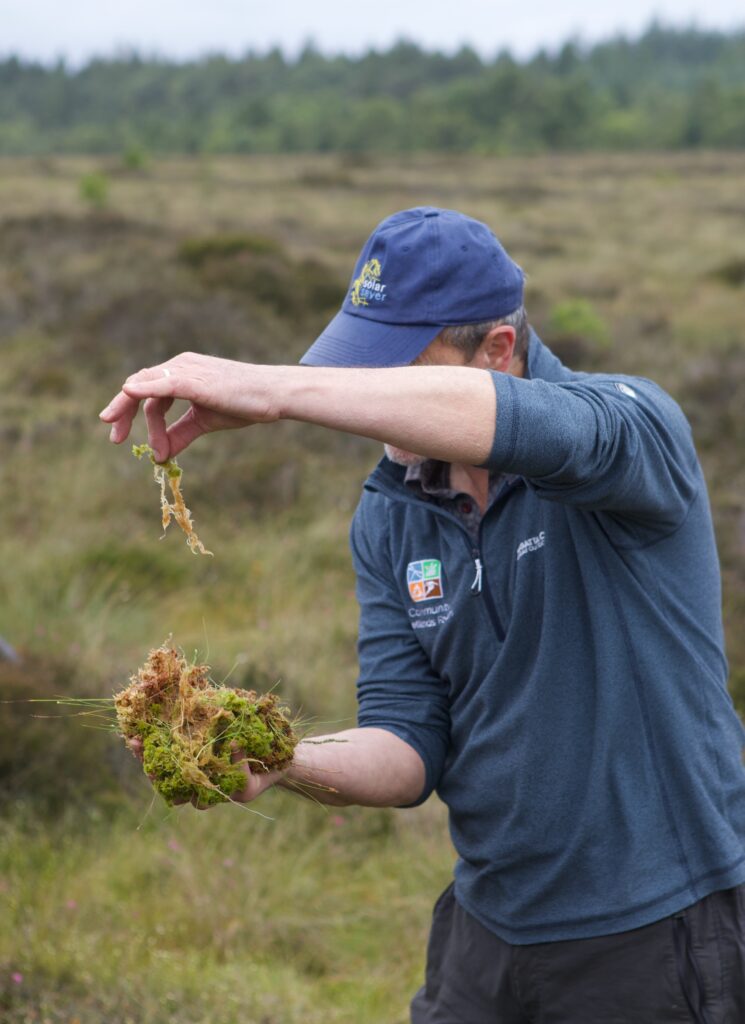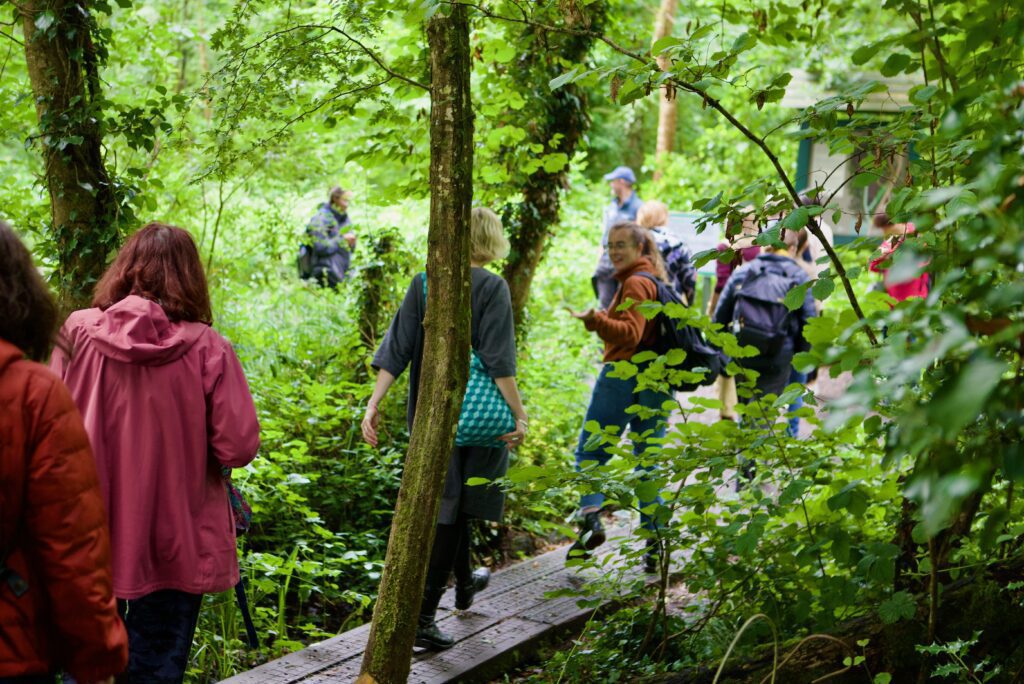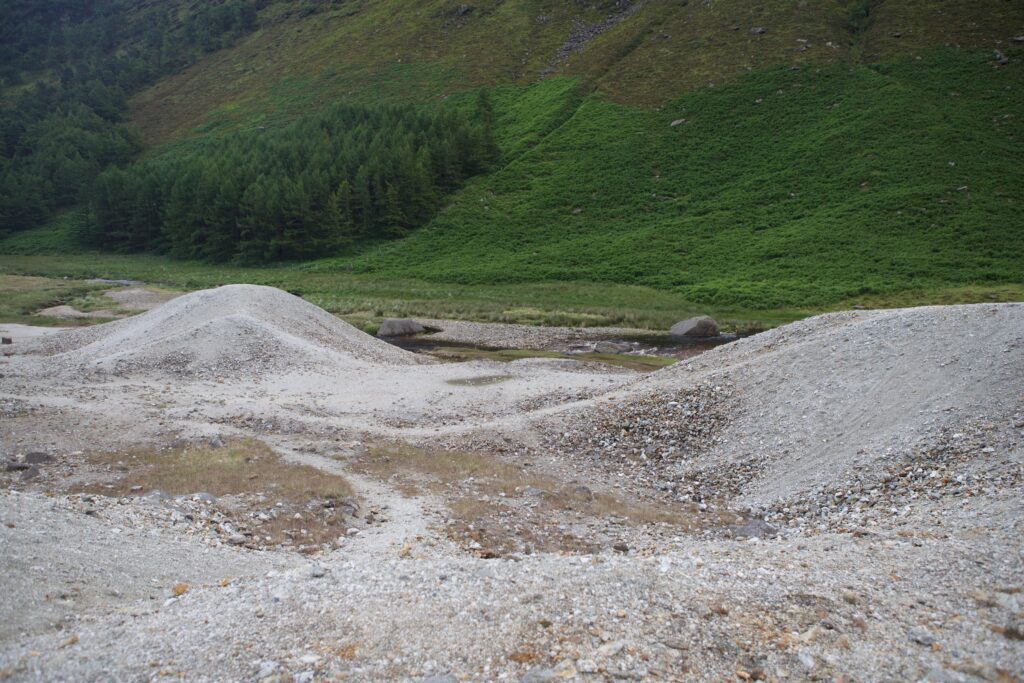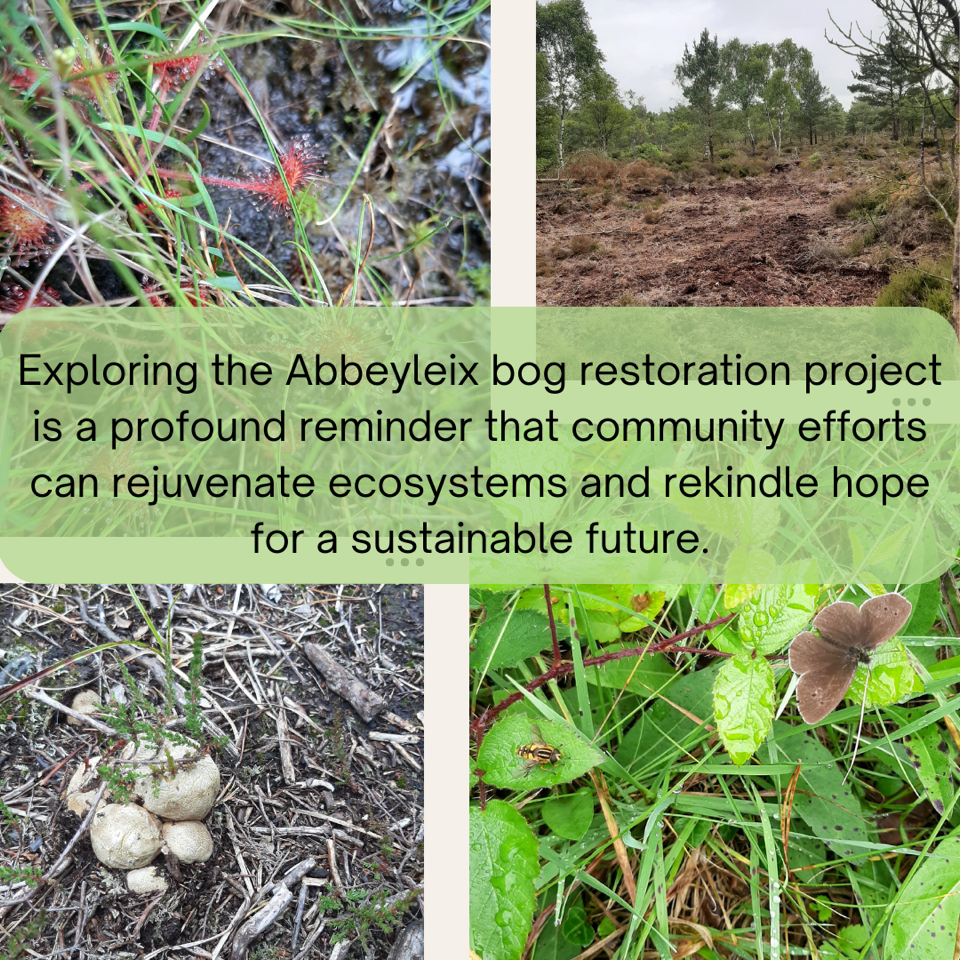Narrative and Place-Making: Two Examples

Image Credit: Chris Uys from Abbeyleix Bog Project © Katherine Fama 2023
“The community wants this.” The refrain was repeatedly invoked at both site visits during the main institute of the Post-Extractivist Legacies and Landscapes conference in Dublin. Both at the Abbeyleix Bog Project in County Laois and the Glendalough Mines in County Wicklow, site leaders made sure to stress how important their projects were to the local population, and how much the community supported their efforts – despite a lack of attention or willingness to engage by political leaders. In both cases, the site leaders stressed that the projects were community-based efforts. In so doing, they demonstrated the ways that narrative and connection reveal how spaces of neglect or waste hold intrinsic value that is often disregarded or invisible to outsiders.

Abbeyleix and Glendalough are joined in the potentiality of their spaces, through place-making, as sites for local engagement and community-building. Both sites could be conceptualized as wastelands in that they were both laid waste to by industrial processes (which, through extraction, exhausted or made waste of their resources). They might also appear as wasted spaces in a western, capitalist view that demands land be productive to be of value (Merchant 131). Abbeyleix, as a wetland, fits into an older conception of wasteland as a “place that is [understood as] hostile to human survival,” a commonality across wetland environments (Di Palma 3; Giblett 1). However, as scholars like Vittoria Di Palma note, the concept of a wasteland is very much a cultural construction – and therefore malleable.
Both areas were previously subjected to extractive industries: peat in the case of Abbeyleix, and lead and other metals at Glendalough. Despite these similar histories, the local groups we met with demonstrated the range of responses and ambitions for post-extractive sites. In the case of Abbeyleix, the Bog Project seeks to accomplish multiple aims: replenishing as much of the bog (with its powerful carbon storage potential) as possible, building a park space for locals, and offering educational programming for all. The multi-purposed nature of Abbeyleix marks it as part of the growing body of regenerative projects globally that see environmental protection and care as central to community place-making and wellbeing (Gibbons 1). Glendalough’s history offers different challenges: the ruins of a neighboring medieval monastic complex, along with a spectacularly beautiful glacial valley, already make the location an immensely popular tourist spot. Advocates for the mine seek the preservation of the remaining remnants of the former industrial zone, which is sparse: a handful of buildings mostly from the 19th century, a single piece of machinery left behind, and multiple natural features that point to the history of mineral extraction.

To transform these areas, local leaders have stressed the historical legacies and contemporary (and future) values that the sites represent. This spatial meaning-making is accomplished through situating places in their historical, social, and cultural contexts. Many scholars have articulated this phenomenon through the frame of haunting. Michel de Certeau argues this in his contention that “haunted places are the only ones people can live in” (108). Avery Gordon argues that haunting is critical for “producing a something-to-be-done,” in other words, our reckoning with haunted spaces can prompt action and cultural change (xvi).
In reimagining post-extractivist sites, a core component of the place-making work that must be accomplished is finding the ghosts of the site. We must understand the histories, stories, cultures, and politics that developed these places to both connect to them and to build the will to create new stories for these places. Stories build coalitional support via meaning-making. Developing meaningful places in post-extractivist sites requires the cultural work of making wasteland spaces into meaningful places – completed through the sharing of and connection to local histories and memories – rich with potential for their communities and beyond.
– WESTON TWARDOWSKI, Rice University
Works Cited
De Certeau, Michel. The Practice of Everyday Life. Translated by Steven Rendall. Berkeley: University of California Press, 2011.
Di Palma, Vittoria. Wasteland: A History. New Haven: Yale University Press, 2014.
Gibbons, Leah V. “Moving Beyond Sustainability: A Regenerative Community Development Framework for Co-creating Thriving Living Systems and Its Application.” Journal of Sustainable Development 13/2: 2020.
Giblett, Rod. Wetlands and Western Cultures: Denigration to Conservation. Lanham: Lexington Books, 2021.
Gordon, Avery. Ghostly Matters: Haunting and the Sociological Imagination. Minneapolis: University of Minnesota Press, 2008.
Merchant, Carolyn. The Death of Nature: Women, Ecology, and the Scientific Revolution. New York: HarperCollins, 1980.
